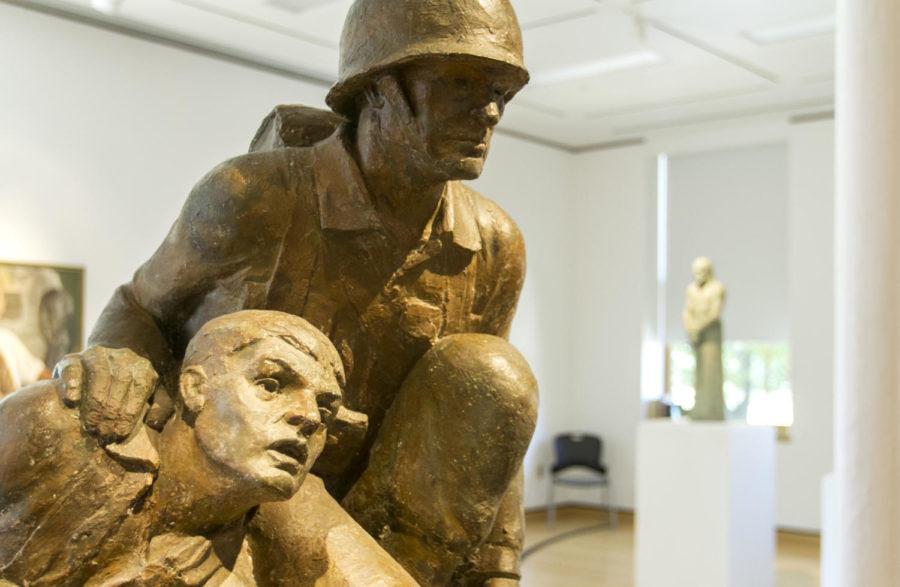Petersen’s iconic art of Iowa State
August 1, 2012
The Christian Petersen Art Museum will have Petersen’s sculptures on display for only a few more days, as they will be put back in storage on Aug. 3 and replaced by contemporary art pieces done by Andy Magee.
Every ISU student has come across Christian Petersen’s art on multiple occasions, whether it’d be “Conversations” for the Oak-Elm residents, or “Fountain of the Four Seasons” for any student flipping in a coin to reverse the “curse” of walking over the Zodiac.
Whatever piece of Petersen’s art you’ve passed, it has no doubt been part of your memory of the beauty that is Iowa State’s campus. And although his contributions to the campus have been iconic, his sculptures go beyond just the ones you see outside and are on display in the Christian Petersen Art Museum but only for a short time for now.
“[Throughout the year,] we get a lot of questions about where Christian Petersen’s art is, and they come into this space and they don’t see it,” said Allison Sheridan, program coordinator for University Museums, “and so [summer] is the time of the year where the community can make it on campus. So the community members are more likely to come and see the Peteresn [art] they remember on campus.”
“It’s a very midwestern regionalist style he’s done here,” Sheridan said. “But he had a completely different life on the east coast before he came here to Iowa State, and his art was very different from that time period.”
When Petersen was 9, his family had moved from Denmark to the United States, and it was in New Jersey that he completed his education and then moved on to apprentice under Henry Hudson Kitson in the art of sculpting.
At Iowa State, he taught for the applied arts and mainly had females as his students and was a very popular professor to the point that some males attended his class unofficially. It wasn’t until 1939 males were allowed to enroll.
On top of that, Petersen dedicated a lot of his time to Iowa State. “He was the artist in residence for 21 years at Iowa State,” Sheridan said. “[He] was the first such artist in residence at any college or university in the nation, so it’s a pretty significant feat.”
“Perhaps his most successful work is ‘The Price of Victory,’ also known as ‘Fallen Soldier,’ a sculpture of a dying WWII soldier. It had to be moved out of the Memorial Union because students had such a strong emotional reaction to it,” Sheridan said. “It’s not that they disliked it; it’s that it brought tears to their eyes.” The emotional response from students was so strong, the sculpture had to be removed in a matter of months from when it first displayed in the Memorial Union.
“Petersen thought it was the highest compliment ever to be paid: to have a sculpture removed because it was too emotional. He was a teacher and a sculptor and most certainly left his artistic footprint on Iowa State.”
The exhibit will be on display until Aug. 3 in Morrill Hall.
The next exhibit will feature the works of Andy Magee, starting Aug. 7.







